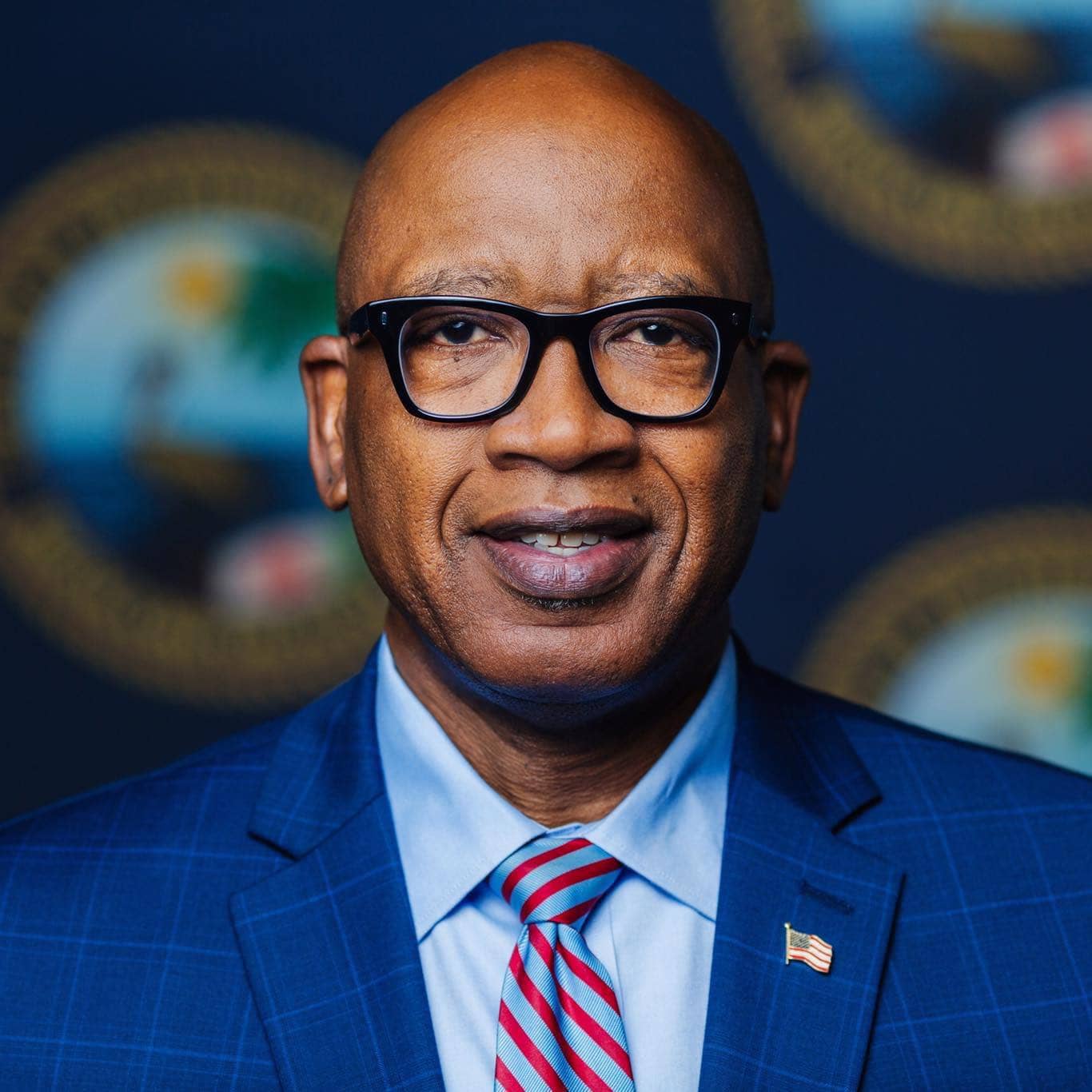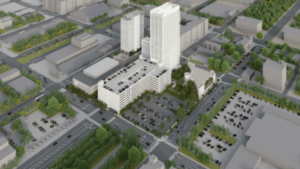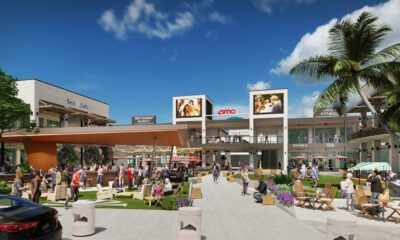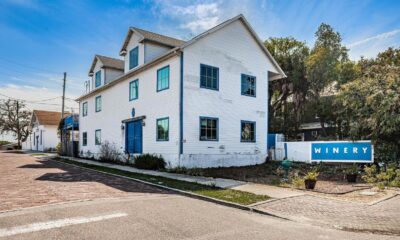Thrive
Welch reflects on his first year in office

January will mark the one-year anniversary of Kenneth Welch serving as St. Petersburg’s 54th mayor.
Welch was sworn in on Jan. 6, becoming the city’s first Black mayor. Since taking office and pledging to incorporate an equity lens on the city’s priorities and policies, Welch’s administration has achieved many of the goals he initially set out to accomplish while grappling with headwinds – but he isn’t taking his foot off the gas.
In a one-on-one interview with the St. Pete Catalyst, Welch shared his experiences as mayor, his vision for the city and challenges he is confronting.
The responses have been edited for clarity.
St. Pete Catalyst: Since taking office, how have your goals evolved/changed?
Ken Welch: There hasn’t been anything unexpected in facing some of the same challenges we’ve had in the past few years. I can recall when I was sworn in office, I had Covid. We had to be flexible and adapt to the pandemic while also addressing the rising costs of housing as the No. 1 issue. It’s been a top issue even during my campaign that affects everyone from CEOs to college students. We also had near misses with Hurricane Ian and Hurricane Nicole, which are events that can always happen. However, I am really excited about the community engagement we’ve seen for the redevelopment of the Tropicana Field/Gas Plant District. Over 1,000 folks weighed in during the community conversations events for the vision. It’s more than I expected.
Also, as an accountant, I’m looking forward to sitting with every city department to review their budgets. It’s a great way to give direct feedback.
I think we have made great progress in making sure we’ve established a strong culture in our organization and values in how the departments have incorporated and embraced inclusive and intentional development in terms of how we govern.
We’ve made key appointments to our team with Rob Gerdes, who started as an assistant city administrator focusing on housing and is now the administrator; James Corbett as the city development administrator; Amy Foster, who served as the Homeless Leadership Alliance of Pinellas CEO and former city council member, and assumed Corbett’s former position as the community and neighborhood affairs administrator; Brian Caper, the manager of public-private partnerships for the city; Alizza Punzalan-Randle as the managing director for communications and community engagement in the mayor’s office; and Erica Riggins as the PIO; Celeste Davis as the new director of arts, among other hires.

A rendering of Moffitt’s planned campus in St. Petersburg. All renderings are conceptual and were presented during the first CBA program meeting. Images: City of St. Petersburg records and Moffitt Cancer Center.
This year, a number of proposed projects – the redevelopment of the municipal services center (MSC) building, the Gas Plant District, the Moffitt Cancer Center/TPA Group bid – have halted and the city has restarted the RFP (request for proposals) process. What is the driving reason in restarting the process for those projects?
Overall, it’s about the priorities for our communities, it’s not about the developers, particularly concerning city-owned land. We are the second-smallest county in the state with limited land. The projects have to pencil out and make fiscal sense for the city and address our priorities. The Historic Gas Plant is the most impactful, and the MSC is another one. Before I was sworn in, the city council said the value of the MSC deal was too low with the increase in property values and we didn’t have a real plan for facility usage. MSC and certainly the Moffitt/TPA Group proposal were examples of that. They wanted us to sell that land under the appraised value [in which the Moffitt/TPA Group development team wanted a $19 million subsidy] and in return, we’d get low workforce housing.
The Manhattan Casino lease, which has now expired, was also initially an unsolicited proposal.
The story is we need to be clear on our priorities for city-owned land, and Chair Brandi Gabbard has talked about that.
By canceling the RFP process for these projects, do you feel it creates a chill effect for developers to work with the city? How would you describe your relationship with developers?
We are very transparent in how I said I would approach inclusive development throughout my campaign. The developers I’ve spoken with understand the issues of property values. When I met with developers, which I intend to meet with more next year, they need certainty for projects. We will be focusing on the permitting process. Bloomberg and Harvard are working with us to make the permitting process as efficient as possible. We had over $1 billion in permitting value for projects the year – a new record- and I don’t see that slowing down.

Sugar Hill Community Partners’ rendering of Palm Court.
On the topic of development, after you received the four new proposals for the redevelopment of Tropicana Field/Gas Plant District this month, what are your thoughts?
We are re-reading them every day and have an internal team and external consultant evaluating them in terms of strengths and weaknesses. I am delighted to see the responses. The Gas Plant embodies our pillars, and all four respondents understood why this has to be an equitable venture given the history and promises made [but never fulfilled with the rise of the stadium].

Tampa Bay Rays’ rendering of its proposed redevelopment of the Trop site.
When you reissued the RFP for the Trop/Gas Plant District redevelopment, you made it a requirement for proposers to include a Tampa Bay Rays stadium. In this round, the Rays submitted their own proposal. What does that translate to you in terms of their commitment to stay in St. Pete?
It goes back to my comments during my campaign and inauguration speech on rebuilding and establishing relationships. I reached out to the Rays, the county, the city council and the community to make sure everybody understood our priorities and come to a consensus. It did not make sense to have an RFP process and have to guess where Rays preferred a site within those 86 acres. Relationships matter and communication with key partners is fundamental, you can’t have progress without it. We have positive movement after many years and reasons for not having these discussions in progress; now we have certainty for the future district and baseball.
After receiving the proposals, are you now meeting with those prospective development teams?
We are approaching this the same way when the original proposals were whittled down to two development teams – if we have additional questions, we will have that one-way communication. We are otherwise not meeting with the proposers.
The city will host a community presentation on Jan. 4 at the St. Petersburg Coliseum regarding the selection process. A final decision will be announced by Welch at his first State of the City address, scheduled for the end of January.

Albert Whitted Airport. Photo by Veronica Brezina.
When are you expecting to reissue another RFP or RFQ for the potential redevelopment of the Albert Whitted Airport site?
I wasn’t planning on discussing the site within my first few months as mayor, but it was due to an agenda item presented to the council regarding the master plan. It’s 120 acres that we need to envision the use of for the next 100 years. I felt the need to be transparent and it was good timing. It [An RFP/RFI or RFN] may be reissued next year. We are currently focusing on the Gas Plant District.
The topic of the redevelopment of the Tampa Bay Rowdies stadium has been discussed by community leaders. What is your stance?
We have talked about the vision for that area, and it requires conversations on the best use of the land. The redevelopment of the Gas Plant District could impact the uses of the stadium.
New projects seem to consistently be on the rise in downtown. How can we continue to grow, but grow responsibly while not jeopardizing St. Pete’s unique character?
We are focusing on the city-owned assets by using our funding resources, and also developing relationships with the state. One of the things we did last year was we went to Tallahassee for the session and traveled to D.C. to meet with the President, Vice President and secretaries. We are going to be 100% on partnerships and resources on housing and infrastructure through utilizing our assets in CRA [Community Redevelopment Agency]. In South St. Pete, we’ve committed $12 million and used that to fund almost 700 units for developments such as Jordan Park, Fairfield Avenue Apartments, Habitat for Humanity and the list goes on. We know the luxury market rate developments are still going to rise in the Skyway Marina District, downtown and to the west.
There are several vacancies for city administration, some of which were sudden departures, how do you plan to fill those positions?
We have over 3,000 employees in the city so it is likely that some people may leave as any organization. One of the things that’s been a blessing is prior to being sworn in, is I was able to network with other mayors when I attended the Bloomberg Harvard City Leadership conference in December. The biggest advice they gave me was to not make changes immediately. Typically, when a new administration forms, the old administration exits. We wanted to be able to understand the organization and make necessary changes, but not broadly.

PSTA’s SunRunner. Image provided.
How has the city advanced in terms of transportation?
We’ve made significant progress on not only the new Howard Frankland Bridge, but also the Gateway Expressway, and the SunRunner [the region’s first rapid bust transit line], which has been well received in helping connect people. All of these achievements must be recognized and the work to fund each of those projects.
When businesses come to the city and work with our economic development groups, are you involved in meeting with the interested business partners?
We have a good relationship with all of those groups [the economic development groups and St. Petersburg Area Chamber of Commerce]. I meet with corporate leaders when I am asked to by a number of those groups whenever I can be helpful.

A group of people play pickleball at Walter Fuller Recreation Center. Photo provided.
One topic that continues to surface at city council is about the need for more pickleball courts. Are you planning to add more courts? If so, where and when?
I was at a conference last week in Atlanta and they talked about the national phenomenon of pickleball interest. We are working with groups to ensure staff is working on that issue [need for more courts] and will respond to it. We have a number of priorities.







